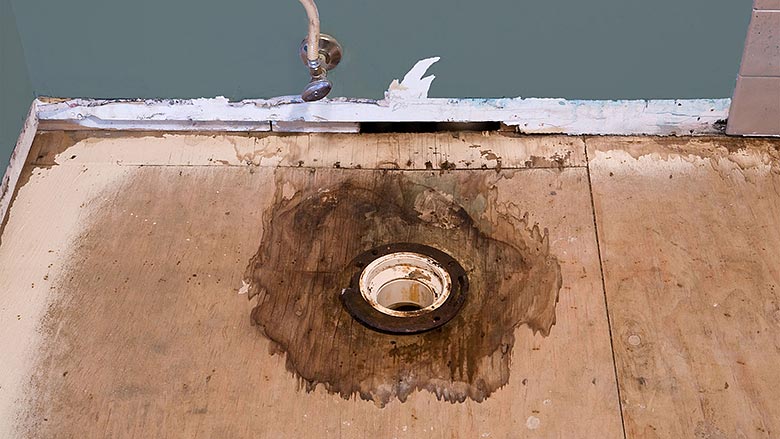Here below you can discover a lot of amazing expertise in relation to Looking for Signs of Water Damage in the Bathroom.

The shower room is extremely susceptible for damp buildup and prospective water damages due to the frequent use water in it. This write-up offers basic examination techniques to assist finding water damages risks.
The regular use water in the washroom makes it incredibly prone for wet buildup and potential water damage. By checking it consistently, you can reduce water associated damages.
The following set of evaluations is simple to carry out as well as must be done when in every three months in order to keep your restroom in good shape as well as to avoid prospective water damages caused by the bathtub, the shower, pipe joints and plumbing, sinks, cabinets, and the commode
Do not forget executing these examinations and also be detailed while doing them. Bear in mind that these easy evaluations can save you a lot of cash by giving very early indicators for water damage
Sinks and Cabinets
Sinks and closets are revealed to wetness as well as humidity daily and also are commonly ignored. Examine routinely under the sink and on the kitchen counter over it. Repair any drip in the catch as it might suggest drain problems. Look around the sink, slow draining pipelines might suggest a blocked drain. Replace sink seals if they are fractured or loosened.
Tub as well as Shower
The shower and bathtub call for special attention and also upkeep. Check the floor tiles as well as replace if fractured. Make certain that there is no missing cement in between the tiles. Evaluate as well as replace split caulking at joints where the walls fulfill the floor or the bathtub. Obstructed drains and also pipes problems will certainly prevent the bath tub from drying and also might indicate severe problems under the tub. Seek advice from an expert immediately to avoid architectural damage. Pay attention to stainings or soft areas around the tub walls as they may show an interior leakage.
Plumbing
Signs for water damage are tough to spot given that many pipelines are installed inside the wall surfaces.
Pay special interest to floor covering as well as wall surfaces moisture and also stains as they may show an unnoticeable plumbing trouble. Check wetness degrees in adjoining areas as well.
The Bathroom
The commode is a susceptible water joint. Check the water lines as well as look for leaks around the bathroom seat, in the tube, and under the water storage tank. If you identify any indications of dampness on the floor around the bathroom, check for leakages in the toilet edge and storage tank seals.
Know that hanging commode bowl deodorants raises the chances for blockages.
TIPS TO PREVENT WATER DAMAGE IN THE BATHROOM
The average household uses approximately 80-100 gallons of water per person per day. For a family of 4, that's almost 2,500 gallons of water a week! The largest portion of this consumption comes from bathroom use. Flushing the toilet uses the most water, followed by taking a shower or bath. With that much water running through the home, water damage in the bathroom is bound to happen. Knowing how to spot signs of a water leak is essential to preventing long-term damage. This guide provides you with tips to reduce the impact of water damage on your bathroom.
CAUSES OF BATHROOM WATER DAMAGE
Pipe breaks are the most common cause of water damage we see in our daily jobs. The age of a pipe plays a large role in a pipe break as well as corrosion. Over time, the metal begins to break down, allowing water to escape. Frozen pipe breaks are also a concern in the winter months. Toilet overflows caused by paper products or children flushing inappropriate items. Degraded caulking around the toilet or bathtub can allow water seepage, sometimes behind the fixture, into the subfloor or walls. Condensation forms when the water in a pipe is cooler than the air temperature. Beads of water form on the exterior of the pipes, sometimes so much so that the water begins to drip and pool below. Sink or shower backups created by poor drainage. HOW TO PREVENT WATER DAMAGE IN YOUR BATHROOM
Inspect your toilet supply line for worn or frayed hoses and replace them as needed. Winterize your plumbing to prevent a frozen pipe break. Use vent fans to prevent condensation that can lead to mold growth. Routinely check and replace degraded caulking around your toilet or bathtub. Increase the temperature in your toilet tank and insulate your pipes during the warm summer months to keep condensation from forming. Use child safety locks on the toilets. Flush only toilet paper. "Flushable" wet wipes are actually not good for your plumbing system. Additionally, feminine hygiene products should not be flushed. Prevent water from escaping the tub or shower. Make sure shower curtains are in good condition. Inspect shower doors and replace the seal strip if necessary. Wipe up any water that accumulates on the floor and use bath mats. Water left to sit can cause damage to the tiles and flooring. Refrain from using bath products containing heavy oils to avoid a clogged drain.

Do you like more info about How to Fix a Water Damage Bathroom? Post feedback below. We'd be pleased to hear your thoughts about this post. We are looking forward to see you back again in the future. Do you know about another person who is interested in the niche? Please feel free to share it. Thanks for going through it.
Book A Service